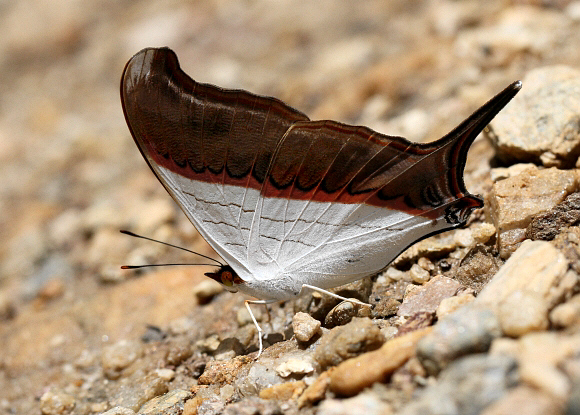 Marpesia zerynthia, Arrierito Piha reserve, Colombia – Adrian Hoskins
Marpesia zerynthia, Arrierito Piha reserve, Colombia – Adrian Hoskins
Introduction
The genus Marpesia is confined largely to the neotropical region, but is closely allied to the Mapwing and Maplet butterflies ( Cyrestis & Chersonesia ) of the Oriental region.
Daggerwings are similar in wing shape to Swordtails and Swallowtails ( Papilionidae ), but the latter have 6 legs whereas Marpesia and all other Nymphalidae genera have only 4 legs. Another feature to look for is the antennae. In all Papilionids these are recurved at the tip, but in Marpesia they are straight. In total there are 17 Marpesia species, all with the same wing shape as zerynthia, except for petreus which has 2 tails on each hindwing and a deeply scalloped outer margin to it’s forewing.
Marpesia zerynthia ( previously known as coresia ) cannot be confused with any other species. It is found from Texas to Bolivia.
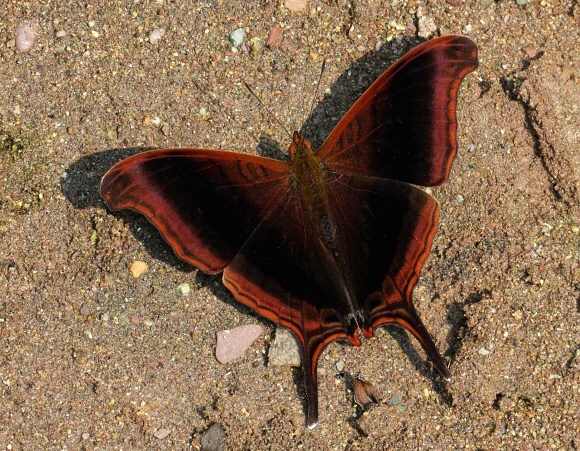 Marpesia zerynthia, Rio Onolulu, Tingo Maria, Peru – Adrian Hoskins
Marpesia zerynthia, Rio Onolulu, Tingo Maria, Peru – Adrian Hoskins
Habitats
This species occurs at all elevations from 0-2400m and occurs in deciduous and evergreen forest. It is primarily a cloudforest insect which is most abundant between about 800-1800m.
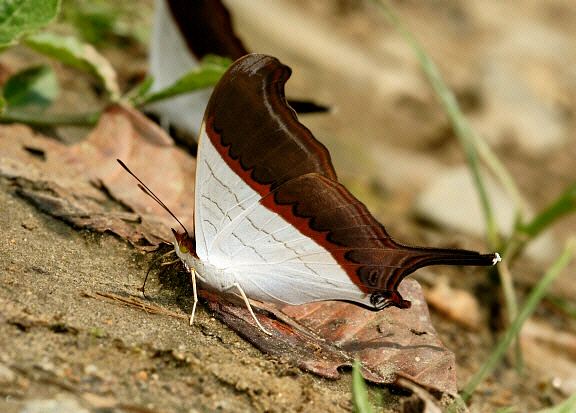 Marpesia zerynthia, Rio Kosnipata, Peru – Adrian Hoskins
Marpesia zerynthia, Rio Kosnipata, Peru – Adrian Hoskins
Lifecycle
I have no data relating to zerynthia, but the following characteristics are applicable in general to the genus Marpesia : The eggs are white or yellowish, and laid singly on the foliage of trees and shrubs in the family Moraceae – including Ficus, Chlorophora, Brosimum and Artocarpus. The fully grown caterpillars are very colourful, typically marked with red and / or yellow spots and stripes. There is a single row of unbranched, recurved spines along the back, and the head is adorned with a pair of very long wavy spines. They feed diurnally and rest on the upper surface of leaves. The pupae are typically pale in colour, marked with blackish spots or blotches, and have wiry filaments projecting from the back of the abdomen and from the head.
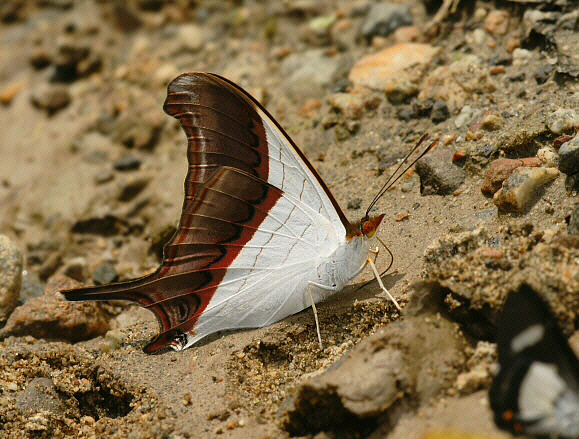 Marpesia zerynthia, Rio Kosnipata, Peru – Adrian Hoskins
Marpesia zerynthia, Rio Kosnipata, Peru – Adrian Hoskins
Adult behaviour
This species is usually encountered as small groups of about 6-12 males, visiting wet sand or mud to imbibe mineral-laden moisture. They particularly favour feeding at shallow fords on unmetalled mountain roads. In hot weather they jostle constantly for position and feed with their wings erect or partly open. In cooler conditions they feed with wings outspread, displaying the subtle deep maroon hues of the upperside.
Females are elusive, spending most of their lives in the forest canopy, but in overcast weather will sometimes descend to settle on foliage along forest trails.
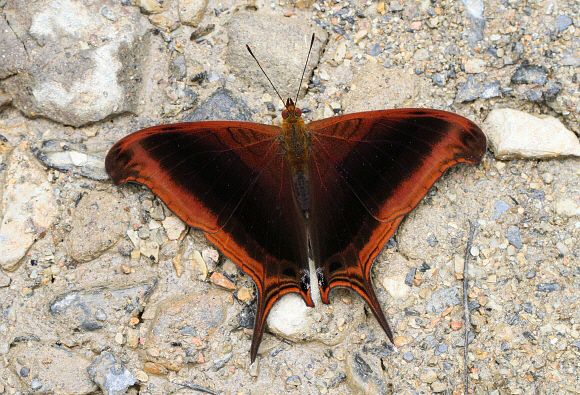
Marpesia zerynthia, Tatama NP, Colombia – Adrian Hoskins
